MENU
MENU
Making Tea
How to brew Sencha (steamed green tea) with ice

The method of brewing sencha – including Fukamushicha (deep-steamed green tea) and kukicha (steamed green tea with stems) – in this article is an example of CHAMART’s way which is easy, delicious and economical.
There are many ways to brew Sencha.
It is better to adjust the temperature of the water, amount of tea and brewing time depending on the tea (area of production, plucking time of tea leaves, etc.). Thus, please find your own favorite method while enjoying tea.
When brewing the tea, it is recommended to drink the tea within the same day.
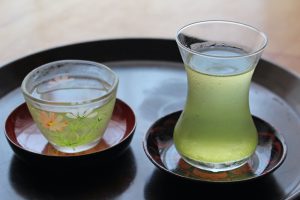
Left: Sencha brewed with ice
Right: Fukamushicha brewed with ice
When brewed tea with cold water or ice, the color of the tea is clearer than when brewed with hot water. Additionally, the taste has less bitterness and astringency, but it has an intense, strong umami and rich taste.
*Umami is the fifth taste after sweet, sour, salty, and bitter. The main component of umami is glutamic acid of amino acid, etc.
Sencha brewed with ice for 1 cup
1 heaped teaspoon of sencha (medium-steamed green tea) (about 2〜3g)
4 to 5 ice cubes
1. Place the ice cubes and the tea leaves in a teapot or teacup and leave it at room temperature.
2. The ice cubes will melt in about 1 hour. When all the ice cubes become water, pour the tea into a teacup.
If you place it in the refrigerator, it will take more time to melt, but the taste will be stronger and richer.
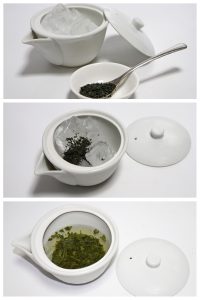

Fukamushicha brewed with ice for 1 to 2 cups
1 heaped teaspoon of Fukamushicha (2 to 3g)
10 ice cubes
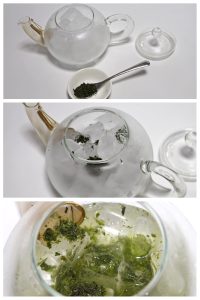
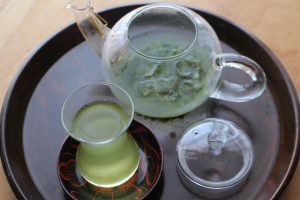
*If you over brew the tea and it is too strong, please adjust the taste by adding some hot or cold water.
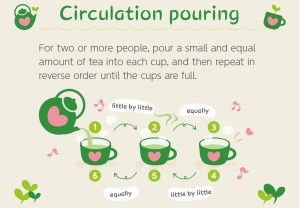
*Tea leaves contain caffeine. The diuretic, stimulant and anticancer effects of caffeine intake are clinically recognized. On the other hand, excessive intake of caffeine may have a damaging effect on health. Especially, pregnant or breastfeeding women, and children should be careful with the amount of caffeine they intake.
Reference:
農林水産省 カフェインの過剰摂取について
https://www.maff.go.jp/index.html
https://www.maff.go.jp/j/syouan/seisaku/risk_analysis/priority/hazard_chem/caffeine.html
公益社団法人日本茶業中央会(2013) 新版 茶の機能: ヒト試験から分かった新たな役割 第一刷 一般社団法人農山漁村文化協会
大森正司、阿南豊正、伊勢村護、加藤みゆき、滝口明子、中村羊一郎編(2017) 茶の事典 初版第一刷 朝倉書店
高野實、谷本陽蔵、富田勲、中川致之、岩浅潔、寺本益英、山田新市 (2005) 緑茶の事典 改訂3版 柴田書店
CATEGORY